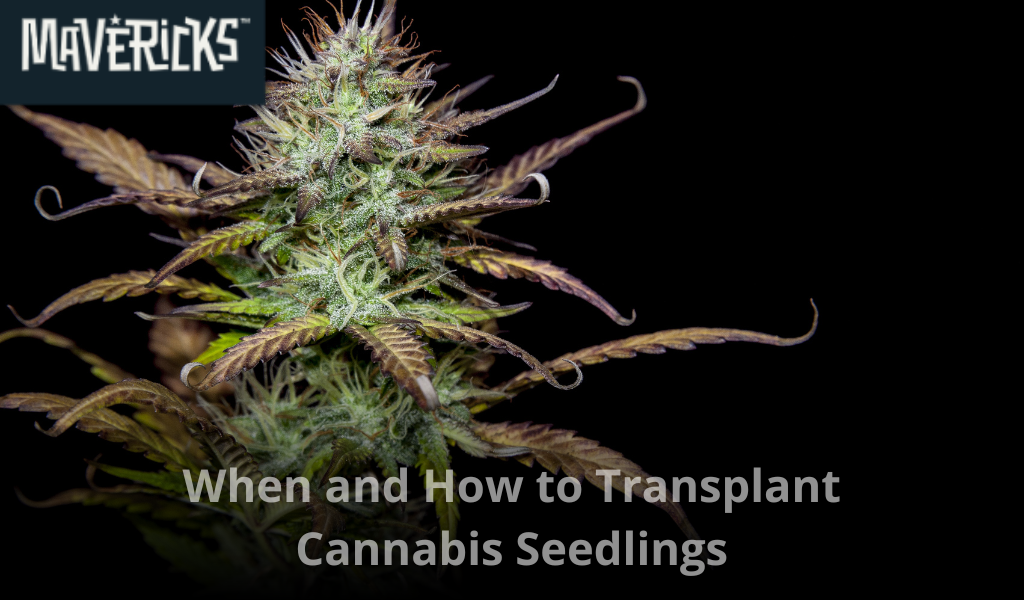Transplanting cannabis seedlings is a pivotal step in the cultivation process. Done correctly, it promotes robust root development and sets the stage for a healthy, high-yielding plant. This guide will walk you through the optimal timing and methods to transplant your seedlings effectively.
Why Transplanting Matters
Starting seeds in smaller containers like solo cups or starter plugs allows for better control over moisture and nutrients during the early stages. However, as seedlings grow, their root systems require more space to expand. Transplanting ensures:
-
Enhanced Root Development: Prevents root-bound conditions that can stunt growth.
-
Improved Nutrient Uptake: Larger root zones can access more nutrients.
-
Optimal Plant Health: Reduces stress and promotes vigorous growth.
When to Transplant Cannabis Seedlings
Timing is crucial. Transplant too early, and you risk damaging delicate roots; too late, and you may hinder growth.
Signs Your Seedlings Are Ready:
-
3–4 True Leaves: Beyond the initial cotyledons, true leaves indicate readiness.
-
Visible Roots: Roots emerging from drainage holes or circling the container's bottom.
-
Plant Size: Seedlings reaching 4–6 inches in height often signal it's time.
How to Transplant Cannabis Seedlings
Materials Needed:
-
New containers (1–5 gallons, depending on final plant size)
-
Quality potting mix suitable for cannabis
-
Watering can with pH-balanced water
-
Optional: Mycorrhizal fungi to promote root health
Step-by-Step Process:
-
Prepare the New Container:
-
Fill with potting mix, leaving a hole in the center large enough to accommodate the seedling's root ball.
-
Moisten the soil slightly to help settle it.
-
Remove the Seedling:
-
Water the seedling's current container to keep the soil intact.
-
Gently tap the sides and invert the container, supporting the seedling's base, to slide out the root ball.
-
Inspect the Roots:
-
Check for healthy white roots. If roots are circling densely, gently tease them apart to encourage outward growth.
-
Transplant:
-
Place the seedling into the prepared hole, ensuring it's at the same depth as before.
-
Fill in around the root ball with soil, pressing lightly to eliminate air pockets.
-
Water Thoroughly:
-
Water the transplanted seedling to help settle the soil and reduce transplant shock.
Post-Transplant Care
-
Lighting: Provide appropriate light levels, avoiding intense light for the first 24–48 hours.
-
Humidity: Maintain moderate humidity to reduce stress.
-
Monitoring: Watch for signs of transplant shock, such as drooping leaves or slowed growth, and adjust care as needed.
Tips for Successful Transplanting
-
Avoid Overwatering: Ensure containers have proper drainage to prevent root rot.
-
Use Quality Soil: A well-aerated, nutrient-rich mix supports healthy root development.
-
Minimize Transplants: Limit the number of transplants to reduce stress, especially for autoflowers.
By following these guidelines, you can ensure your cannabis seedlings transition smoothly to their new homes, setting the foundation for a thriving grow. For high-quality seeds and more cultivation tips, visit Mavericks Genetics USA.

Share:
10 Best Marijuana Seeds for Beginners (Available at Mavericks Genetics USA)
10 Ways to Germinate Cannabis Seeds: A Comprehensive Guide